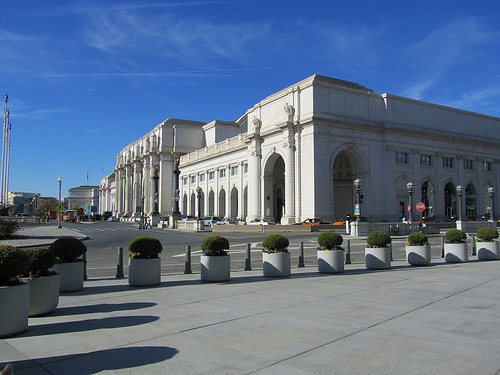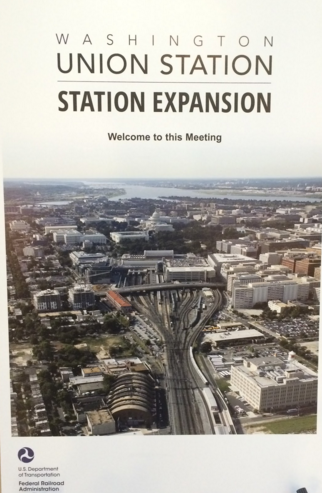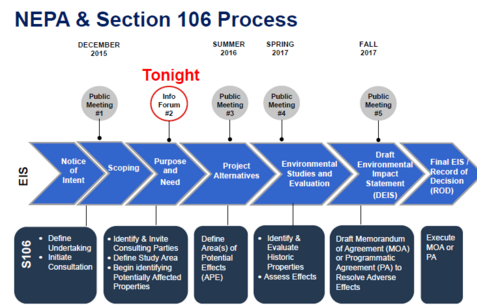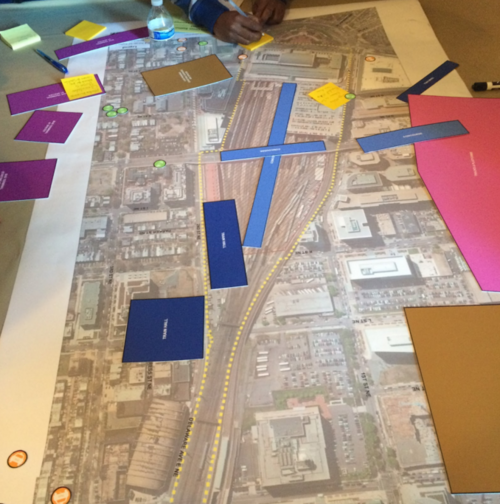Here’s a closer look at what’s in store for Union Station
Plans for renovating and rebuilding parts of Union Station are well underway, the aim being to better connect train, bus, pedestrian, bicycle, and vehicle traffic to accommodate a surge in ridership over the next 25 years and beyond. On Wednesday, the public got a closer look at some of the possibilities.
Union Station houses DC’s busiest Metro station, is the hub for both of the region’s commuter rail systems, MARC and VRE, and is both the second-busiest intercity train station in the country and the second-busiest station in Amtrak’s system. In anticipation of rising demand, planning started last year for a $10 billion, four-year expansion project that could triple station capacity.
Several hundred people attended a Wednesday night meeting to hear what the Federal Railroad Administration, which owns Union Station, has in mind for the overhaul. While plans for expanding the area where passengers wait to board trains surfaced Wednesday morning, this meeting was about telling the public about the need for renovating and rebuilding virtually the entire complex, from parking areas, bus terminals, taxi stands, and train platforms to the original station building and the space above the tracks just north of the station.
With Union Station being in its 109th year of service, some of the project’s literature refers to the project as the “Second Century Plan.”
Here are some of the functional features the project team said it’s looking to bring to Union Station:
A more efficient way for taxis and car services (including ridesharing programs) to pick up and drop off passengers. Taxi drivers typically have a 30-45 minute wait in the taxi queue at the station today.
A more bike-friendly environment. There’s currently too little capacity for both bicycle parking and bike sharing to meet even current demand.
Wider train platforms, as the ones there now aren’t compliant with ADA standards, and also do not meet standards for an emergency evacuation. Widening the platforms will actually mean a decrease in the number of tracks at the station, from 20 to 19. But planners also emphasized that intercity rail capacity will increase because the platforms will be significantly longer—nearly a quarter mile in some cases.
Larger, more open concourses that can handle the expected tripling of passenger demand by 2040.
A safer bus terminal, where there’s less of a chance that people and buses will need to use the same space. Also, a more visually appealing bus terminal.
A complex that meshes well with the H Street Bridge, which will be rebuilt in the next several years.
Architecture, parking, and air space
One thing the FRA is putting significant emphasis on is the aesthetic appeal of the new station. The current building is on both the National and Washington DC Register of Historical Places, and its key features, such as the great hall, will remain unchanged. Presenter Paul Moyer reviewed examples of other stations around the world that are both functional and attractive, to use as an example.
While demand is maxing out for just about every mode of transportation that passes through Union Station, there’s one mode where it’s not: driving. Usually, only 70-90% of the parking spaces Union Station’s garage are full at peak times, and nearly a quarter of those are leased out on a monthly basis, meaning they’re likely used by workers in surrounding offices not directly tied to the station.
Rather than increasing the number of parking spaces, the planners are simply looking to make a more visually appealing parking facility. An architecturally renowned garage in Miami was cited as a possible inspiration.
Also, having empty railyard just blocks from the US Capitol is not the most economically stimulating use of space. Therefore, the air rights over the tracks were sold to Akridge, who will develop a project called Burnham Place, a mix of offices, retail, hotel, and residential that will sit above the tracks. Because the air rights begin at the current height of the H Street Bridge, designers will not be limited to a claustrophobic experience like what travelers experience at New York’s Penn Station.
As you can see in the graphic above, the Federal Railroad Administration (and the Union Station Redevelopment Corporation), Amtrak, Akridge, DDOT, WMATA, and the National Park Service all own different portions of the affected site, and will need to sign off on the plan, as will various historical review boards and federal interests.
Community engagement
While at least some of what was presented is very likely to happen, nothing is a done deal yet. The official purpose of the meeting was to solicit input from the community before developing formal proposals.
Community members were shown a scale map of the study area (roughly, the current station footprint, including the parking garage, plus the tracks as far north as L Street), and asked to place cardboard templates representing possible concourses, bus terminals, and other features in various places on the map, to gather feedback on possibilities.
The strongest sentiments at both this meeting and the last one, which was in December, were about how the Union Station project will affect surrounding neighborhoods.
The business community is looking for better intermodal connections (between Metro, Amtrak, bus, and streetcar), and local residents is looking for better connections to the neighborhood itself, such as through the long neglected entrance off of H Street, and to have many of the nearby Metrobus routes actually stop at the station, rather than blocks away.
Because the projects are dependent on one another, both local residents and the business community asked that the required environmental reviews for Burnham Place and the rest of Union Station will be done at the same time. This is not guaranteed, because the process for each project is different.
If you would like to view the presentation from the FRA, it is posted here, and comments are still being accepted on the site. The next public meeting, where project alternatives will be presented, is scheduled for this summer. Once the project is approved, construction is expected to last about four years.





